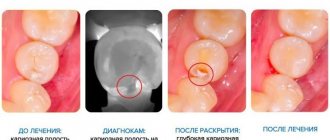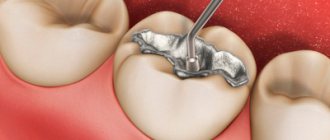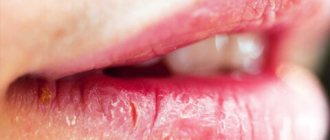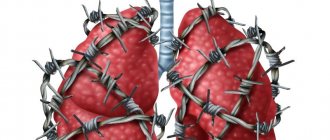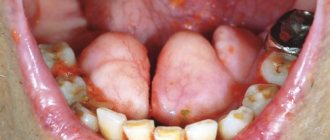Dentists recommend undergoing preventive examinations at least once a year and, if caries is detected, treating it at an early stage. Unfortunately, many patients go to the doctor with an advanced form of the disease. In this article we will tell you why and how deep caries occurs, and we will tell you about treatment methods.
In this article
- Areas affected by caries and stages of the disease
- Deep caries and its features
- Risk factors for deep caries
- Forms of deep caries
- Features of diagnosing deep caries
- How can deep caries be cured?
- Conclusion
Definition of the concept in dentistry
Deep caries is the last stage of the carious process occurring in the tooth, which is characterized by extensive damage not only to hard tissues, but also to the deep layers of dentin. In general, the concept of “deep caries” reflects the depth of the lesion.
Caries can be:
- primary - a consequence of untreated secondary caries;
- secondary (recurrent) - the occurrence of a carious process under a filling in a previously treated tooth.
Based on the sensation of pain and clinical examination, the disease is divided into 3 forms:
- Acute form. It is determined by the narrow entrance opening of the carious cavity and the wide base (during examination), as well as by descriptions of the patient’s sensations - reaction to food temperature and chemical irritants.
- Chronic form. It is characterized by a wide (funnel-shaped) inlet and a narrow base. The patient feels pain when the “hollow” is clogged with food and during examination with a probe by the dentist.
- Deep cervical caries. It is characterized by the development of demineralization of enamel tissue and the carious process in the cervical area of the tooth (near the gums).
According to the clinical course, caries is also divided into several forms:
- compensated,
- subcompensated,
- decompensated.
If the tooth continues to hurt
Mild pain immediately after treatment of deep caries is not a cause for concern. They are recognized by dentists as the norm and do not require special treatment. Mild pain in the tooth after treatment of deep caries can be explained by the fact that the gums were affected during the treatment procedures. After 1-2 days, the discomfort will go away on its own.
But if, after treatment of deep caries, the tooth hurts severely and for a long time (more than 2-3 days) and, against the background of the pain syndrome, a high temperature and swelling of the gums appear - all this may indicate a poor quality of treatment and the development of an inflammatory process under the filling. With such symptoms, you cannot do nothing: you need to urgently contact the dentist.
To eliminate the risk that your tooth will hurt after treatment, you need to carefully choose the clinic where you will have your teeth treated. You should not choose dentistry based on the most beautiful advertising that promises the lowest prices - you should find out all the details about the level of equipment of the clinic, the technologies that are used in it, the level of qualifications, and the doctors working in it.
All conditions for high-quality treatment of deep dental caries have been created in our clinic in Moscow - VENSTOM.
Calculate the cost of treatment by taking a short test in 20 seconds!
Do not delay your treatment, because in this matter time plays against us.
Diagnostics
To make a diagnosis, diagnostics are carried out, which include:
- external inspection using a mirror;
- instrumental examination using a probe;
- voicing symptoms (complaints) by the patient;
- thermal diagnostics (checking the reaction to cold and hot);
- electroodontic diagnostics (testing the reaction to exposure to current);
- radiography (performed if the presence of secondary deep caries is suspected or to exclude it).
If upon examination significant damage (destruction) of the tooth crown is detected, expressed by the presence of a deep carious cavity and accompanied by pain during probing, then this confirms the presence of deep caries in the patient.
In the acute form, the carious cavity is filled with light, softened dentin. In chronic deep caries, the walls and bottom of the cavity are filled with a layer of dense pigmented dentin (from brown to black). Percussion of the tooth is not accompanied by pain.
CLASSIFICATION OF CARIES
In our country, two clinical classifications of caries are used:
- Classification of caries according to I.G. Lukomsky (1949).
- Carious spot.
- Superficial caries.
- Average caries.
- Deep caries.
- According to the international classification of diseases (IBC-10 3rd edition WHO, 1997), caries is divided into:
- K02.0 enamel caries (stage of white [chalk] spot, initial caries);
- K02.1 dentin caries;
- K02.2 cement caries;
- K02.3 for suspended caries;
- K02.3 Odontoclasia;
- K02.8 Other dental caries;
- K02.9 Dental caries, unspecified
Despite the apparent differences, these classifications have much in common. Enamel caries, according to WHO, corresponds to caries in the spot stage and superficial caries. Dentin caries corresponds to medium and deep caries. It is important to note that dentine caries has two courses - the acute course of dentine caries and the chronic course of dentine caries.
What are the differences from other forms of the disease?
Deep caries is very similar to some forms of the disease, but there are still visible and invisible differences.
Difference from pulpitis
Pulpitis is a complication of advanced caries. The forms of the disease can be distinguished from each other by their characteristic symptoms:
- Defeat. With pulpitis, the nerve is affected; with caries, the nerve remains unharmed.
- Feelings of pain. With pulpitis, pain can occur spontaneously, even without exposure to irritants on the tooth. With caries, pain disappears along with the disappearance of irritants.
- Night sleep. With pulpitis, sleep can be disturbed due to severe pain; with caries, the tooth does not hurt at night.
Difference from average caries
The similarity between the two forms of the disease is that the patient in both forms feels pain from cold, sour or sweet foods. However, with average caries they go away within 1-2 minutes, with deep caries they last longer.
Medium caries is characterized by the fact that in this form the carious lesion does not affect the tooth pulp and does not cause inflammation of the nerve, as in deep caries.
Areas affected by caries and stages of the disease
Caries is a dental disease in which, under the influence of microorganisms and other factors, the structure of dental tissues is destroyed.
The mechanism of development of the disease is due to the vital activity of bacteria Streptococcus mutans and some other species. They have a cariogenic effect and create conditions for the development of the carious process. It goes like this. Bacteria accumulate on teeth and form a biological film called plaque. When we eat foods rich in carbohydrates, plaque bacteria actively process the sugars they contain and produce organic acids that are dangerous to our teeth. They destroy the enamel structure, deprive it of minerals, and penetrate deep into the tooth. The more acids produced by oral microorganisms, the more active and rapid the destruction of dental tissue.
Damage to teeth by caries does not occur instantly; it can take several months from a small spot to the appearance of a hole in the tooth. Based on how deeply the carious process penetrates, several stages of the disease are distinguished.
- The earliest is the spot stage.
A small focus of demineralization appears on the surface of the enamel. It looks like a whitish dot or streak. It is almost impossible to notice such changes with the naked eye. And provided that there are no other symptoms (pain or discomfort) at this stage, a person often misses the onset of caries and does not see a doctor.
- Superficial caries.
If the stain was not noticed in time, it gradually grows, the enamel tissue is destroyed, and a cavity is formed in it - a small hole. As a rule, there is still no pain, although food may get into the cavity or tooth sensitivity may increase.
- Average caries.
The form of average caries is characterized by the penetration of the pathological process into dentin - the bone tissue under the enamel. At this stage, a carious cavity forms in the dentin, pain becomes severe, and the tooth reacts to temperature or taste stimuli. Most often, people go to the dentist with the listed symptoms.
- Deep caries.
If for some reason you do not treat average caries, the pathology progresses and approaches the pulp - the dental nerve. This is the most complex and dangerous form of caries, because there is a high risk of infection spreading to the pulp, periodontium and the development of complications.
Stages of treatment
Treatment of deep caries is impossible without anesthesia (pain relief) and it takes place in several stages.
- Anesthesia. It is carried out using injection (infiltration or conduction) administration of an anesthetic substance.
- Drilling out a carious cavity using a drill. In this way, the specialist can reach and remove all affected areas of dentin, which is very important to prevent relapse under the filling.
- Treatment (disinfection) of the walls of the tooth and the bottom of the cavity.
- Installation of a therapeutic insulating pad and temporary or permanent filling.
- The final stage involves grinding and polishing the filling.
The following factors influence whether a filling will be installed - temporary or permanent:
- at what distance from the pulp is the carious cavity located;
- parameters of dentin, which separates the pulp from the tooth cavity;
- degree of pain.
If there is a high probability of inflammation developing in the pulp area, the dentist will place a temporary filling. And only if there are no complaints of pain and discomfort for several days, the patient will have the temporary filling replaced with a permanent one.
Cost of the service in Moscow
Of course, the cost of treating deep caries will be higher than the cost of treating initial caries, because the treatment process will be more complex, including various manipulations and carried out in two stages.
On average, the cost of treating deep caries of one tooth can amount to 5-6 thousand rubles, and this is if there is no need for treatment of the tooth canals. If you want to find out for yourself the exact cost of caries treatment in your case, you definitely need to visit the dentist’s office. The doctor will examine the clinical picture, conduct a diagnosis and, before starting treatment, announce its full cost.
Deep caries of the front teeth. What are the differences in treatment?
Deep caries of the front teeth should be treated as carefully as possible so as not to burn the pulp. The main difficulty in treatment is:
- minimum thickness of all tooth tissues;
- inconvenient location of the cavity, if we are talking about caries located in the interdental space.
When infection penetrates into the pulp, pulpitis develops rapidly. A few hours is enough. The disease is accompanied by increasing pain. It needs to be treated immediately.
Reasons for development
Deep caries can form both on a completely healthy unit, and on one where treatment was previously performed. The etiology of deep lesions is the accumulation of pathological microorganisms in the cavity and saliva. Over time, bacteria accumulate and destroy all dental structures.
The main conditions due to which the pathological process occurs are the lack of high-quality cleaning of the oral cavity and regular preventive examinations of the oral cavity in the dental clinic. Objectively, in most cases, the carious process affects the chewing units, due to the high rate of accumulation of plaque in corners that are difficult to reach for cleansing. On the front group of teeth it is easier to notice the lesion and clean it. In addition, the mineral composition of saliva has a great influence, which can inhibit the growth of pathogenic microorganisms.
Provocateurs for the formation of dental lesions at the depth of the cavity:
- drinking water low in calcium and fluoride;
- consumption of sweets, flour, and soda in large quantities;
- mineral balance disorder;
- harmful working conditions at work.
Is it possible to treat deep caries of a wisdom tooth?
The patient can make the decision to remove a wisdom tooth if pain occurs on his own. But only a highly qualified dentist can make a verdict on its treatment.
Treatment of a carious "eight" is considered rational if it has a partial covering in the form of a hood of gum, as well as an antagonist - the third molar located on the opposite side.
Removal shown:
- with a horizontal tooth position;
- presence or absence of 1st and 2nd molars;
- impossibility of treatment due to incomplete opening of the mouth;
- displacement of teeth in a row due to wisdom teeth.
TREATMENT OF MIDDLE DENTIN CARIES
For the treatment of middle dentin caries, the following scheme can be used - a treatment plan, omitting the collection of complaints and anamnesis, diagnosis and differential diagnosis:
- Choosing the color of the future restoration and the material from which it will be made
- Anesthesia;
- Tooth isolation;
- Preparation using a turbine tip and micromotor, air-water cooling, intermittent movements to prevent overheating and thermal burn of the pulp;
- Antiseptic treatment of the bottom of the tooth cavity;
- Preparing the tooth cavity for packaging the selected material.
- Placing a filling;
- Occlusion check;
- Grinding, polishing.
- Recommendations for the patient.
For the treatment of dentin caries, depending, of course, on the location of the cavity, on the condition of the patient’s oral cavity, his wishes and financial capabilities, the following filling materials can be used:
- Amalgamma;
- Glass ionomer cement;
- Chemically cured composite materials;
- Composite materials are photocurable;
- Dual-curing composite materials;
- Compomers;
- Ormokers.
Causes of caries under fillings
As a rule, secondary caries is the result of a whole complex of different factors. Only a dentist can name the exact cause, based on medical history and examination of the unfilled tooth - after he sees what caries looks like under the filling and determines what factors could cause it.
Of particular importance in the formation of secondary pathology is the individual susceptibility of tooth tissue to caries, the composition of the filling material, as well as compliance with oral hygiene.
The main causes of caries under fillings:
- Application of high shrinkage fillings. Over time, such fillings reduce their volume in the carious cavity, which provokes detachment of the filling material from the edges of the hard tissues of the tooth. Bacteria penetrate into the spaces unfilled with a filling, provoking a new stage of caries development. Sometimes, caries damage can be seen with the naked eye along the edges of the filling, especially on the front teeth;
- Poor-quality cleaning of a carious cavity is a direct mistake by the doctor when filling: the affected tissue remains inside, in which bacteria are concentrated, continuing tooth destruction;
- Poor processing of the filling - rough grinding and polishing contribute to increased adhesion, which leads to accelerated plaque formation on the surface of hard tooth tissues, as well as the formation of chips of the filling material and microcracks.
Caries is a systemic disease that can occur not only due to the above reasons, but also due to general factors. For example, in regions of Russia with low fluoride content in the soil, more than 97% of the population (all age groups) suffer from primary and secondary caries. Also, the development of caries under a filling can be triggered by the patient’s refusal of immunomodulatory therapy during the treatment of concomitant diseases.
Symptoms of caries under a filling
In the vast majority of cases, secondary caries is asymptomatic. The first signs, with rapid development, may appear only 3-6 months after the filling is installed. If symptoms appear 2-4 weeks after filling, this is recurrent caries. It occurs due to improper treatment and can pose a serious threat to the tooth. To eliminate it, it is necessary to replace the old filling with repeated cleaning and disinfection of the carious cavity.
Classic symptoms of caries under a filling include:
Darkening of the enamel near the edge of the installed filling - pigmentation can be located either at one edge or along the entire rim of the filling;- The causative tooth acquires a gray tint, through the enamel you can see what caries looks like under the filling - it will have a dark tint;
- Chips of the filling and tooth enamel appear, microcracks form (not always);
- The mobility of the filling increases. With prolonged development of caries, it may fall out;
- There is an unpleasant odor from the mouth, caused by the proliferation of bacteria in the formed microcracks;
- Increased sensitivity of teeth to cold, hot, sour and sweet;
- Aching pain appears, which intensifies during the process of biting;
- Acute tooth damage by secondary caries develops, accompanied by pain, swelling and bleeding.
Treatments to relieve suffering
In advanced cases, specific individual techniques are used.
- Anesthesia. It is necessary. The dentin located near the pulp is especially sensitive, so when working with the tooth, pain may occur.
- The affected tissue is removed accompanied by cooled air and water. This is necessary to reduce the likelihood of overheating the tooth surface.
- Anti-inflammatory pads and pastes are used. This is necessary to strengthen the internal tooth tissues located above the pulp, remove bacteria, preventing the development of complications.
Key differences between secondary caries and recurrent caries
Unlike secondary caries, recurrent caries occurs only at the site of treatment already performed. If lesions appear on the same tooth, but nearby, this is repeated caries. It is almost impossible to find out the cause of the development of recurrent or repeated caries. Only a doctor, based on examination data, can suggest why caries appeared under the fillings.
When diagnosing secondary and recurrent caries, the doctor must remember that both types can develop in combination due to a combination of various factors.
Prevention
To avoid deep caries, it is necessary to follow standard clinical recommendations:
- Clean your teeth thoroughly regularly. Use brushes and threads to remove food accumulations from hard-to-reach places. Use an irrigator and antiseptic solutions.
- Maintain proper nutrition. Include fermented milk products, nuts, and fish in your diet. Limit your consumption of sweets and starchy foods.
- Attend medical examinations with a dentist in order to identify diseases at an early stage.

